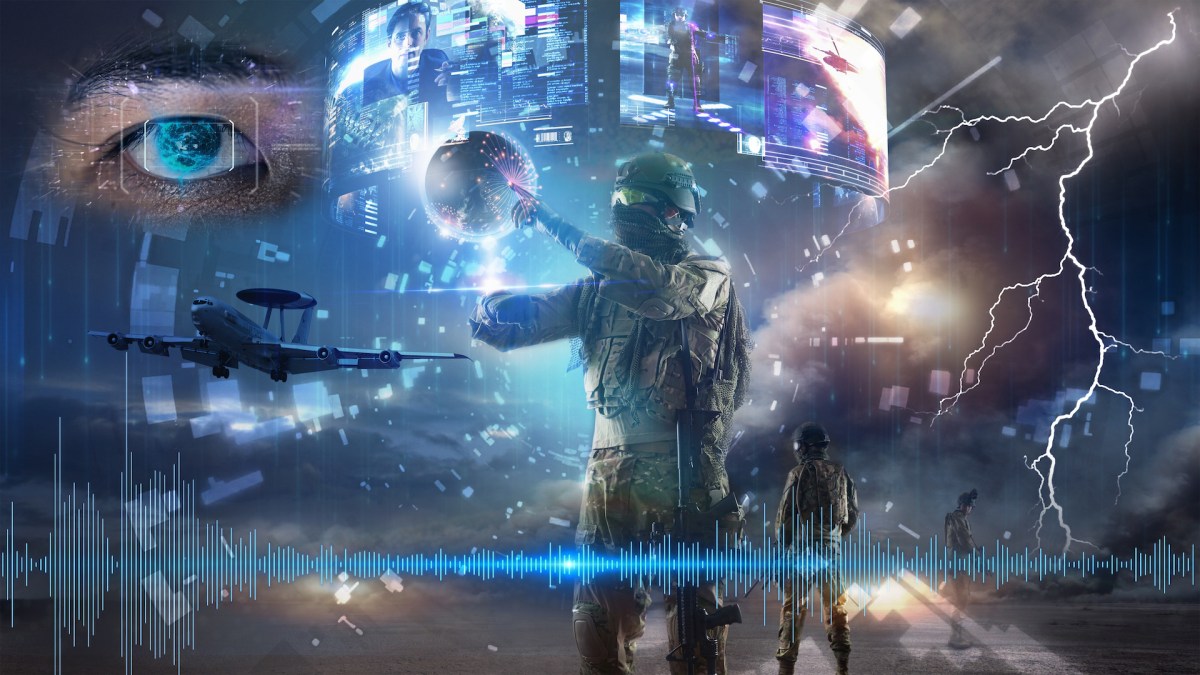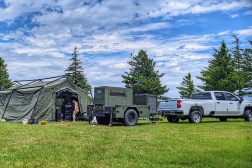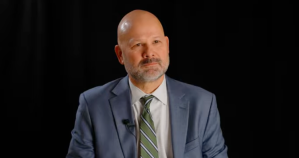Air Force maturing its information warfare enterprise

Five years after the Air Force created an integrated information warfare command, collapsing a variety of capabilities for more synchronized packages and capabilities, the entity is looking to build on the initial foundation and improve how it supports air components.
Described as the competition force — meaning it is engaging adversaries below the threshold of armed conflict — 16th Air Force combines cyber, electromagnetic spectrum operations, intelligence, surveillance, reconnaissance, information operations and weather, among others, into a single organization for unity of effort.
The command is experimenting with a nascent initiative to take the convergence of capabilities and authorities to support air components with their operations — dubbed the information warfare operations cell within the 616th Operations Center, known as the glue pulling information warfare together.
“How can we best support their OAIs [operations, activities and investments] with the IW capabilities and authorities that we have to amplify, to enhance, to produce outcomes?” Lt. Gen. Thomas Hensley, the new commander of 16th Air Force as of Aug. 1, told reporters Thursday during a media call. “We’ve had a couple of syncs with the air components. We’re going through a crawl, walk, run phase, if you will. We’re now at the walk phase and we have generated some outstanding lessons learned on how we can support the air components all the way from the unit level up to the Office of Competitive Activities level and everywhere in between.”
For example, Air Combat Command, Headquarters Air Force and the Office of Competitive Activities are involved in this process and “we’re making strides every single day,” he added.
The Office of Competitive Activities is a new organization spurred on by Air Force Secretary Frank Kendall’s charge to “reoptimize” the service for great power competition against China, though little is publicly known about it. Documents released when the initiative was announced in February this year indicated that it aims to combine disparate efforts to oversee and coordinate sensitive activities.
From a friendly-force aspect, Hensley said this information warfare operations cell will look to determine how much to reveal to the adversary and how much to conceal.
The common trope from the nuclear deterrence era of the Cold War was that deterrence doesn’t work if the adversary doesn’t know what capabilities friendly forces have. Thus, there is a common balance in deciding what to demonstrate to the adversary and what to keep hidden so as not to expose capabilities to countermeasures.
Meanwhile, the organization is looking at how to expose adversary activity and disrupt it via information warfare.
The inaugural commander of 16th Air Force — Gen. Timothy Haugh, who now commands U.S. Cyber Command and directs the NSA — noted when he departed that the command and IW must scale across the Air Force.
As part of that scaling, 16th Air Force is also working on multiple efforts to improve the synchronization and development of information warfare concepts.
One is to develop an information warfare operations center concept, to more closely integrate capabilities. That involves developing campaign plans and operation designs to better understand who says what and when, what is the target audience for content, how effectiveness is measured, and did the adversary even recognize what the command was trying to do.
That along with other efforts — to include developing roles and requirements for what information warfare means — are being worked across multiple levels of the service from the command, the nascent Office of Competitive Analysis, Air Combat Command and the Air Staff.
A challenge for 16th Air Force’s effort is consolidating and integrating the various capabilities, mission areas and authorities under its purview — a huge portfolio ranging from signals intelligence to U-2 spy plane operations to cyber.
Hensley noted that many of the other services began to replicate the efforts of 16th Air Force in terms of converging capabilities.
“The Marines actually followed suit with what 16th Air Force did. In many ways, we’re working through the same things,” he said, referencing the 2023 creation of the Marine Corps Information Command, designed to more tightly link the service’s information forces — including cyber, intelligence and space — in theater with the broader joint force.
“When it comes to Title 10 and Title 50 and cyber authorities and SIGINT authorities, we certainly want to keep those together in one organization so that we have unity of command, unity of action, so that we can move with speed and agility to produce IW outcomes,” he added.
All these efforts come as Kendall has charged Air Forces Cyber — the cyber component to U.S. Cyber Command that sits within 16th Air Force — to elevate. Details regarding that elevation remain vague, with top officials saying they want to take their time to ensure all the various equities are taken into account.
That effort has been spurred on, in large part, by concerns about China.
“The most important challenge that we face is maybe the general public’s lack of understanding about the gravity of the Chinese threat. As we consider the things the secretary has mentioned, why we’re doing great power competition, reoptimization, revitalization, why we’re doing some of these things, is to posture ourselves for great power competition — and quite frankly, as he said, before possible conflict with China,” Hensley said, suggesting earlier this week that the secretary didn’t think the service was postured and thus asked for a reorganization. “I don’t think the general public really understands the things that [China is] trying to do to advance their government at the expense of democratic governance, processes, institutions.”
Hensley was cagey regarding where AFCYBER’s elevation stands now and what that means for 16th Air Force, despite indicating that an integrated information warfare approach with like-capability organized under the same command is likely here to stay.
“The secretary has said that he wants to elevate ACYBER and we’re going to elevate AFCYBER to be a service component command. But that brings in the question, then, what is the future status of 16th Air Force in its totality?” he said. “The only thing I can offer at this point is that we have some very senior leaders that are going through a very deliberate process to determine what is the right way forward with AFCYBER being elevated in 16th Air Force. I think we’re getting pretty close to a decision on that one, but that’s all I can comment on at this time. We have very, very senior leaders that are trying to determine the future of both those commands.”






